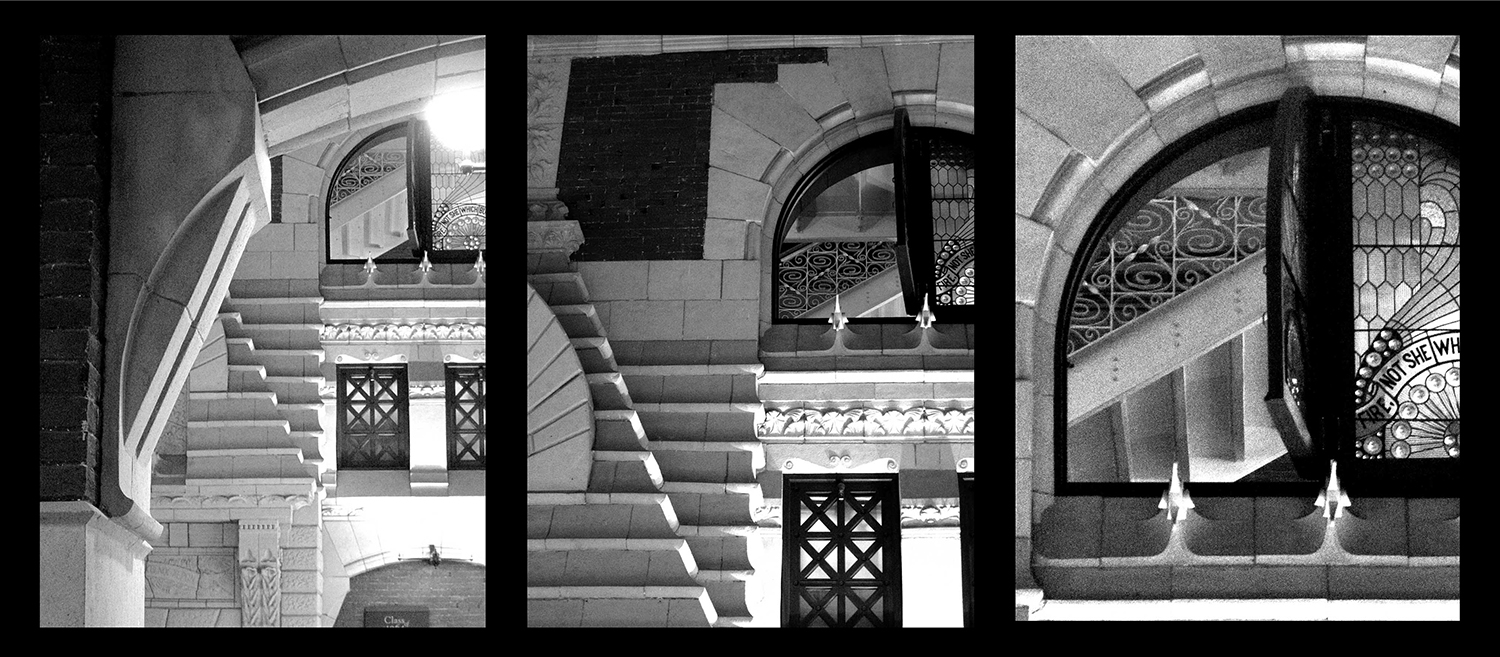
The study of architecture in the College of Arts & Sciences is focused around a six-semester core of sequential design studios with an optional Senior Honors Thesis.
ARCH 1010: Introduction to Design
As the first course in the six-semester cumulative sequence of required design studios, ARCH 1010 focuses on orthogonal geometry, orthographic and axonometric projection and digital fabrication. In ARCH 2010, the design studio following ARCH 1020, students explore the non-orthogonal geometries of animate form as the basis for the development of analogical and prototypical structures. Learn more
ARCH 1020: Introduction to Architecture
An exploration of the design process utilizing drawing and model-making techniques. Skills of representation and fabrication are introduced in the context of the development of each student's capacity to observe, interpret, and translate design concepts into physical form. The course includes a weekly lecture and studio component. The primary purpose of this course is to introduce the fundamental concepts and basic skills necessary in the design of a work of architecture. Fundamental concepts include a basic understanding of description, projection, and fabrication – in both two and three‐dimensions. Basic skills include freehand sketching and drawing, computer‐aided drawing (orthographic and axonometric) and the fabrication of scale models using hand, power, and digital tools. Learn more
ARCH 2010: Design Fundamentals I
As the second course in the six-semester cumulative sequence of required design studios, ARCH 2010 is preceded by ARCH 1020, an exploration of orthogonal geometry and orthographic and axonometric projection. ARCH 2010 focuses on the non-orthogonal geometries of animate form as the basis for the development of analogical and prototypical structures utilizing 3D digital modeling software and digital fabrication. In ARCH 2020, the design studio following ARCH 2010, students explore the movement of the body as a basis for design. Learn more
ARCH 2020: Design Fundamentals II
As the third course in the six-semester cumulative sequence of required design studios, ARCH 2020 is preceded by ARCH 2010, an exploration of the non-orthogonal geometry of animate form. ARCH 2020 focuses on the mapping of the human body’s movement during a specific activity as a frame of reference for the design a site-specific space-enclosing structure. In ARCH 3010, the design studio following ARCH 2020, students explore intersecting geometries. Learn more
ARCH 3010: Design I
As the fourth course in the six-semester cumulative sequence of required design studios, ARCH 3010 is preceded by ARCH 2020, mapping the movement of the human body as a basis for design. ARCH 3010 focuses on the investigation of intersecting geometries through a series of exercises culminating in the design of a community performance space. In ARCH 3020, the design studio following ARCH 3010, students explore the geometry and material qualities of existing constructive assemblies in the development of new spatial and constructional prototypes. Learn more
ARCH 3020: Design II
As the fifth course in the six-semester cumulative sequence of required design studios, ARCH 3020 is preceded by ARCH 3010, and exploration of intersecting geometries. ARCH 3020 focuses on constructive geometry as a means to explore the connections and potential relationships between geometry and basic techniques of building construction. Students draw and analyze constructive assemblies of precedent buildings as the basis for the development of new spatial and constructional prototypes, which are deployed with variability on a specific site. In ARCH 4010, the design studio following ARCH 3020, students design a building in relation to contemporary concepts of geometry in architecture. Learn more
ARCH 4010: Advanced Design
As the sixth and final course in the six-semester cumulative sequence of required design studios, ARCH 4010 is preceded by ARCH 3020, an exploration of constructive geometries. ARCH 4010 focuses on connections between design and theory, especially in relation to contemporary concepts of geometry explored through the design of a work of architecture with a particular program situated a specific location. Learn more
ARCH 4998: Honors Thesis (Elective)
A student may apply during the fall term of their fourth year to graduate with Honors in the Major in Architecture. To graduate with Honors a student must successfully complete ARCH 4998: Honors Thesis. To be admitted into ARCH 4998 in the spring semester of the fourth year a student must have a minimum grade point average of 3.5 in required ARCH courses and submit a written thesis proposal on the first Monday in November in the fall semester of their fourth year. The pdf of the proposal should be labelled “ARCH4998_last name, first name” and be limited to three 8.5x11 pages including a thesis title, subtitle, description (1-3 paragraphs) and an annotated bibliography.
The subject of the thesis must be specifically related to sociocultural or ecological concerns, or both, and link architecture with another discipline of study within the College of Arts & Sciences. The proposal must include the names, academic rank and email addresses of each of the proposed thesis advisors and explain in 1-3 sentences how the academic or research interests of each advisor relate to the subject of the proposed thesis. Honors Thesis is limited to no more than three and no less than two advisors, with at least one in architecture and one in another discipline within the College of Arts & Sciences. Either one of these advisors may be the primary or secondary advisor.
Once the thesis proposal is reviewed and approved by both the Honors Thesis Coordinator and the Undergraduate Chair, a student will be issued a permit to enroll in ARCH 4998 in the spring term. Students are expected to meet with their primary advisor at least once a week during the spring term. Final requirements in ARCH 4998 include drawings (analytical, design, or both) as well as a written thesis booklet. An Honor Thesis may be substantially drawn, but must include some writing, or substantially written, but must include some drawing. Learn more